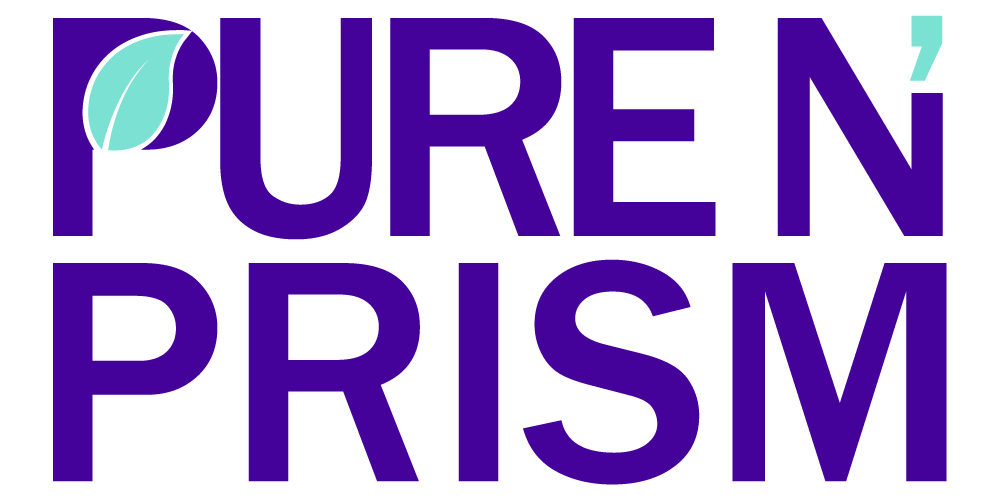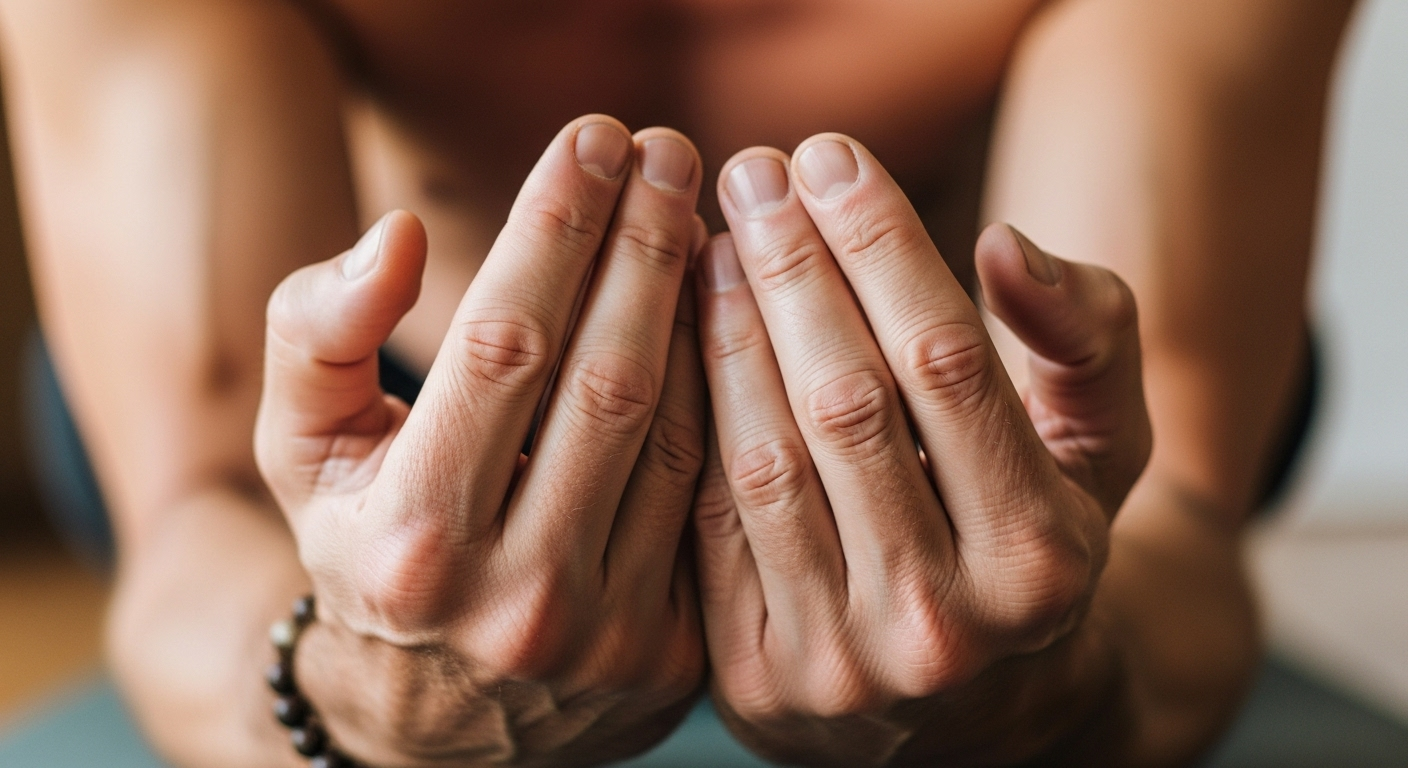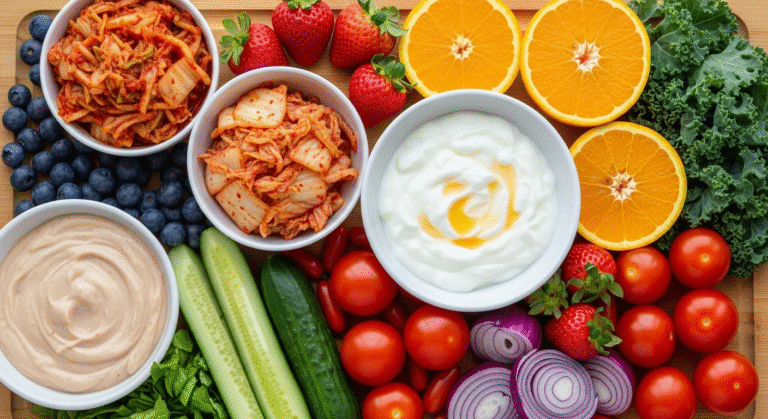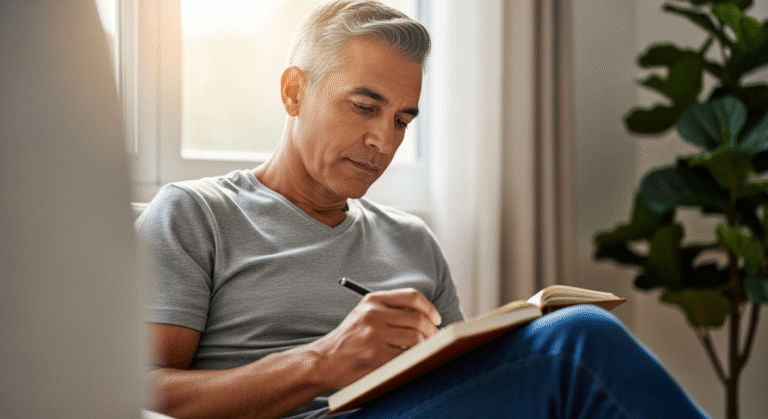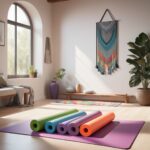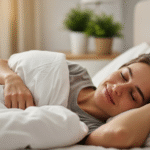Meta Description: Discover how yoga and mindfulness can transform modern men’s lives. Practical tips, benefits, and gear recommendations for building strength and inner peace.
Finding Balance in a Chaotic World
Picture this: it’s 7 PM on a Tuesday, you’ve just finished a brutal day at work, your phone’s buzzing with notifications, and your mind’s racing with tomorrow’s to-do list. Sound familiar? I’ve been there countless times, and honestly, it wasn’t until I discovered yoga and mindfulness that I realized how much I was missing out on genuine peace and physical strength.
Here’s the thing – yoga isn’t just about flexibility or sitting cross-legged humming “om” (though there’s nothing wrong with that if it’s your thing). For modern men, yoga and mindfulness offer something we desperately need: a way to build both physical and mental resilience in our increasingly demanding world. Whether you’re dealing with work stress, relationship challenges, or just feeling disconnected from yourself, these practices can be game-changers.
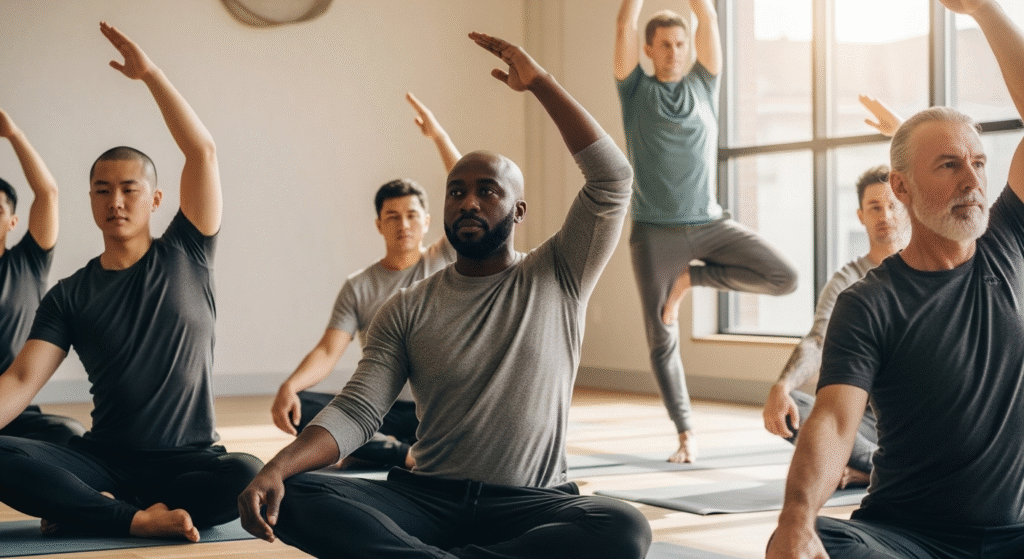
Breaking Down the Barriers: Why Men Are Embracing Yoga
Let’s be real – there’s still a stigma around men doing yoga. I remember walking into my first class feeling completely out of place, wondering if I’d made a mistake. But here’s what I discovered: some of the strongest, most centered guys I know are regular practitioners.
Recent studies show that male yoga participation has increased by over 150% in the past decade. Why? Because men are finally recognizing that true strength isn’t just about how much you can bench press – it’s about building resilience, managing stress, and maintaining physical health as we age.
The benefits are undeniable. Regular yoga practice improves flexibility, builds functional strength, reduces injury risk, and enhances mental clarity. For athletes, it’s become an essential cross-training tool. For desk warriors, it’s a lifeline for combating poor posture and chronic pain.
I’ve been using the Manduka PRO Yoga Mat from Amazon for over two years now, and it’s honestly made such a difference in my practice. The extra cushioning protects my joints during longer sessions, and the non-slip surface gives me confidence in challenging poses. It’s one of those investments that pays dividends every time you roll it out.
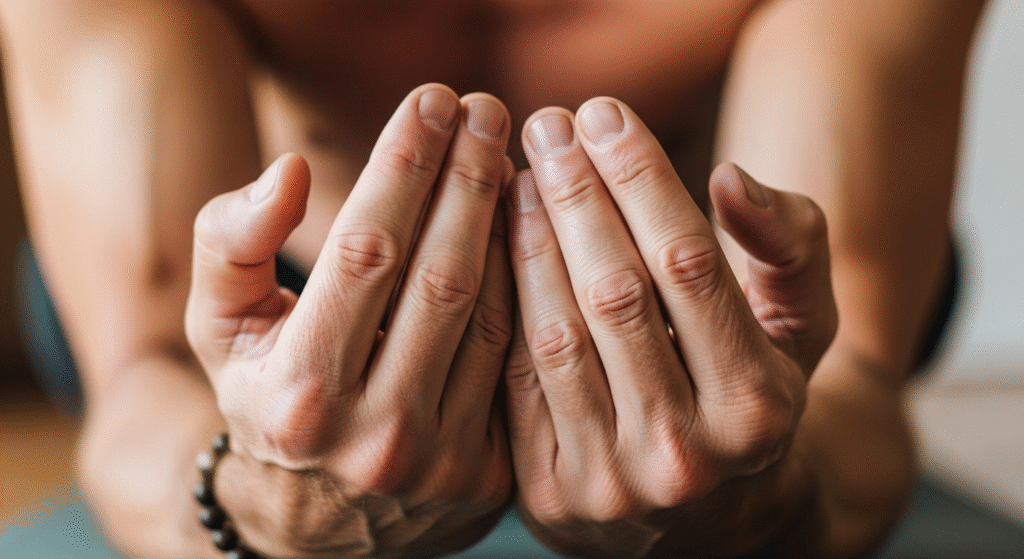
The Science Behind Mindful Movement
Here’s where things get really interesting. When you combine yoga with mindfulness, you’re not just stretching – you’re literally rewiring your brain. Neuroscientists have found that regular mindfulness practice increases gray matter density in areas associated with emotional regulation, memory, and stress management.
For men specifically, this is huge. We’re often taught to “push through” stress rather than process it, leading to burnout, anxiety, and physical health issues. Yoga and mindfulness give us tools to actually deal with stress rather than just endure it.
The practice teaches you to notice tension in your body before it becomes chronic pain. It helps you recognize when your mind is spinning out of control before you make decisions you’ll regret. It’s like having an early warning system for your own well-being.
Starting Your Practice: Practical Tips for Beginners
If you’re new to this world, start simple. You don’t need to master headstands or meditate for hours. Begin with 10-15 minutes of basic poses and breathing exercises. Focus on consistency over intensity – it’s better to practice for 10 minutes daily than to do an hour-long session once a week.
Here are some beginner-friendly poses that pack a punch:
- Downward Dog: Great for shoulders, hamstrings, and building overall strength
- Warrior II: Builds leg strength and teaches balance
- Child’s Pose: Perfect for relaxation and stress relief
- Cat-Cow: Excellent for spine mobility and mindful movement
The key is listening to your body. If something hurts, back off. If you feel good, explore a bit deeper. This isn’t about competition – it’s about connection with yourself.
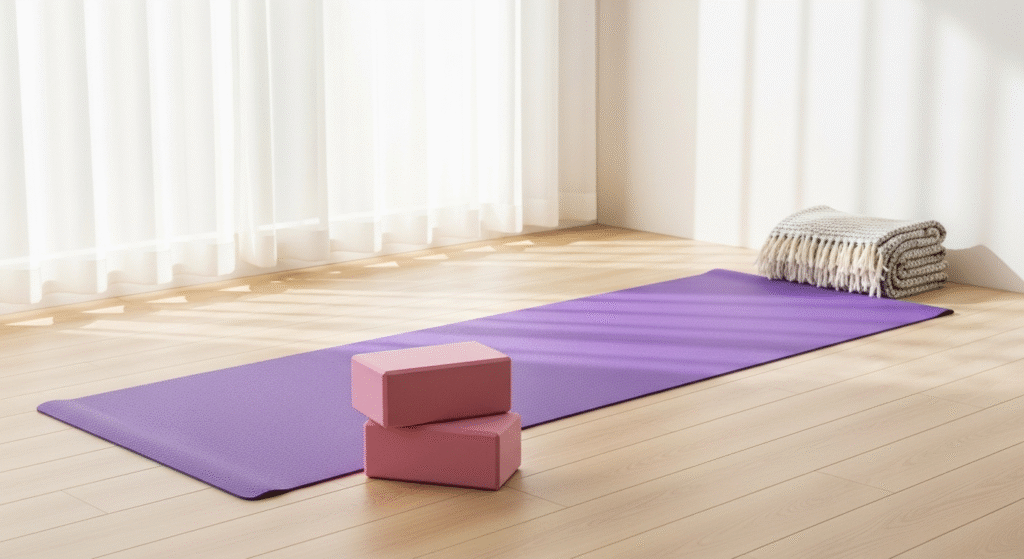
Mindfulness Beyond the Mat
The real magic happens when you take mindfulness off the mat and into your daily life. I’ve found that the awareness I’ve cultivated during yoga naturally spills over into everything else. I’m more present during conversations, more patient in traffic, and better at recognizing when I need to take a step back and breathe.
One simple technique that’s been a game-changer for me is the “STOP” method:
- Stop what you’re doing
- Take a breath
- Observe what’s happening in your body and mind
- Proceed with awareness
It sounds basic, but in our hyperconnected world, these moments of pause can be revolutionary. They help you respond rather than react, making better decisions and maintaining your calm even in stressful situations.
For tracking my mindfulness practice, I’ve been loving the Insight Timer app, but I also keep a simple meditation cushion at home. The Hugger Mugger Zabuton Meditation Mat from Amazon has been perfect for creating a dedicated space for my practice. Having that physical reminder helps me stay consistent with my meditation routine.
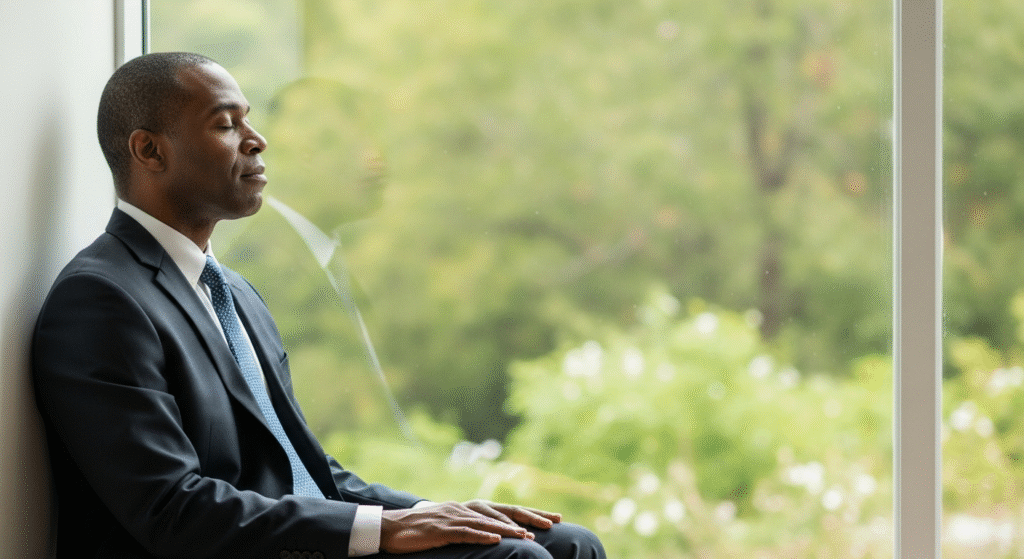
Building Your Home Practice
Creating a sustainable home practice is crucial, especially when you can’t always make it to a studio. Your space doesn’t need to be elaborate – just quiet, comfortable, and free from distractions. I’ve set up a small corner in my bedroom with my yoga mat, a few props, and some essential oils for aromatherapy.
The beauty of a home practice is flexibility. You can practice at 6 AM before work, during lunch breaks, or late at night when you need to unwind. There’s no judgment, no comparison with others – just you and your breath.
YouTube has incredible free resources for guided practices. Start with beginner-friendly channels and gradually explore different styles. Some days you might want a gentle restorative practice, other days a more vigorous flow. Listen to what your body needs.
For props, you don’t need much to start. Besides a good mat, a yoga block can be incredibly helpful for maintaining proper alignment in poses. The Gaiam Yoga Block from Amazon is affordable and versatile – I use mine almost every session to modify poses and maintain good form.
The Ripple Effect: How Practice Changes Everything
After practicing yoga and mindfulness for several years now, I can honestly say it’s changed how I show up in the world. I’m more patient with my family, more focused at work, and more comfortable in my own skin. The physical benefits are obvious – I’m stronger, more flexible, and have better posture – but the mental shifts have been even more profound.
I’ve noticed I sleep better, handle criticism without taking it personally, and actually enjoy challenges rather than seeing them as threats. It’s not that life has become easier, but I’ve become more resilient and adaptable.
The practice has also deepened my relationships. When you’re more present and less reactive, you connect with others on a deeper level. You listen better, communicate more clearly, and approach conflicts with curiosity rather than defensiveness.

Your Journey Starts Now
Look, I’m not saying yoga and mindfulness will solve all your problems – life’s still going to throw curveballs. But these practices give you tools to handle whatever comes your way with more grace and strength. They help you build the kind of resilience that serves you in every area of your life.
The best part? You can start right now. Roll out a mat (or just use a towel), take a few deep breaths, and begin moving mindfully. Your future self will thank you for taking this first step toward a more balanced, centered life.
Remember, this isn’t about perfection – it’s about progress. Every moment of mindfulness, every pose you hold, every breath you take with intention is building something valuable. Start small, stay consistent, and watch how these practices transform not just your body, but your entire approach to living.
Ready to begin your journey? Grab that mat, find a quiet space, and give yourself permission to explore what strength and serenity really mean to you.

